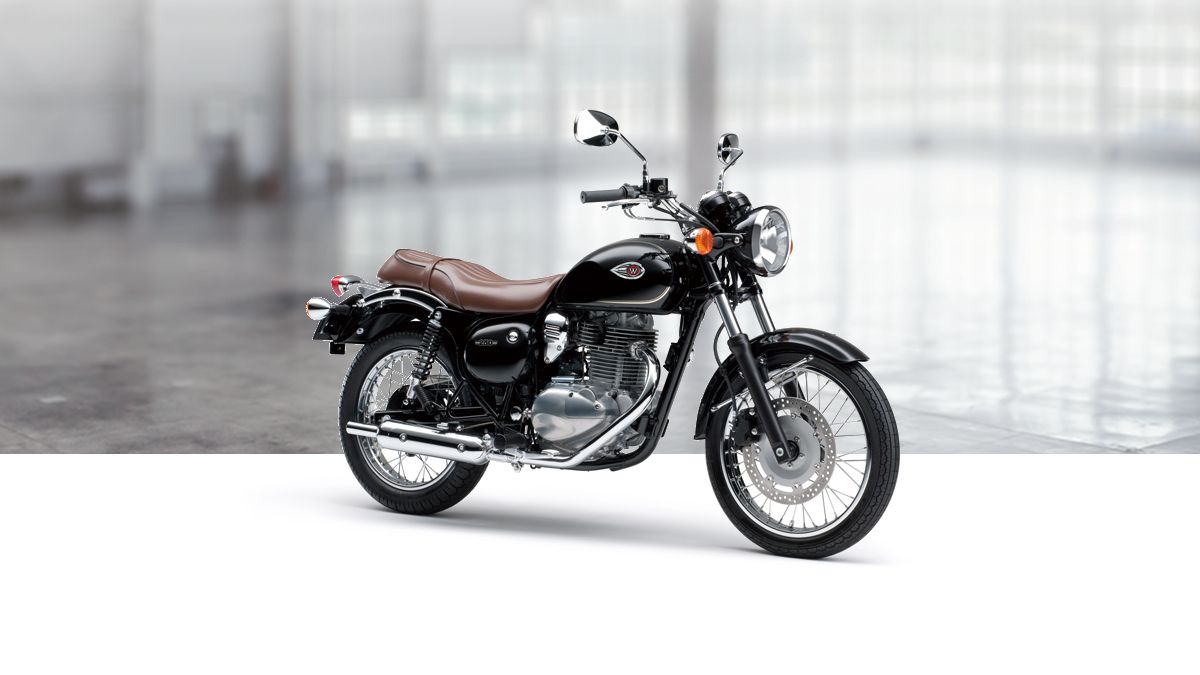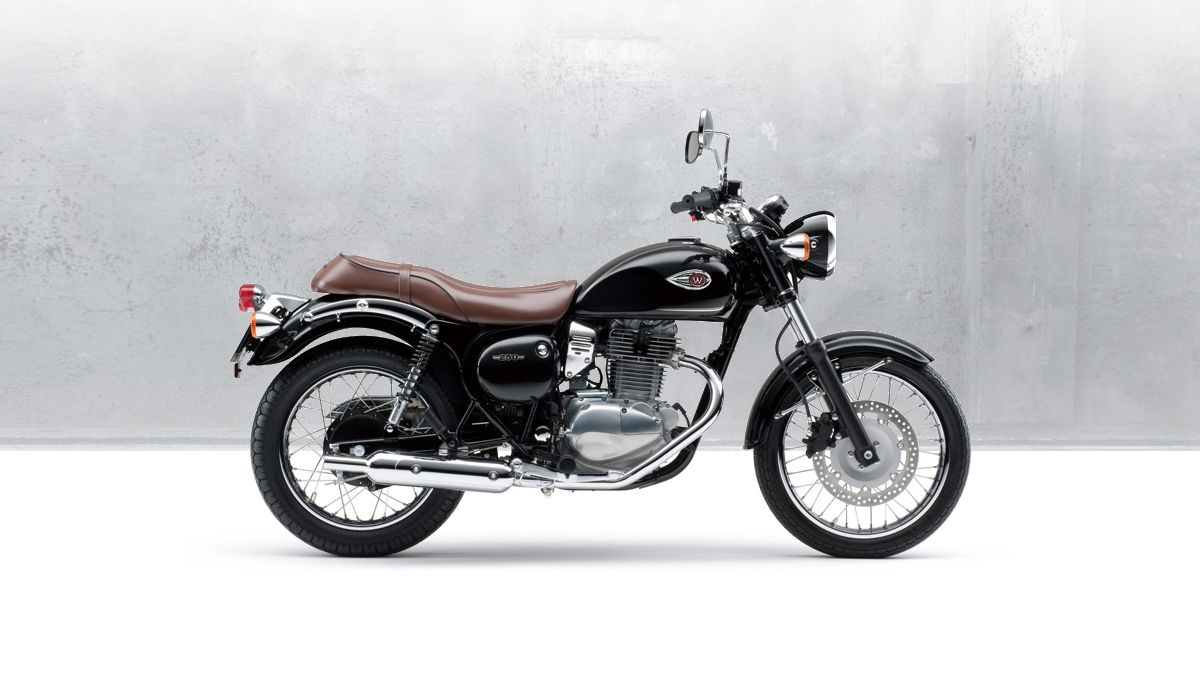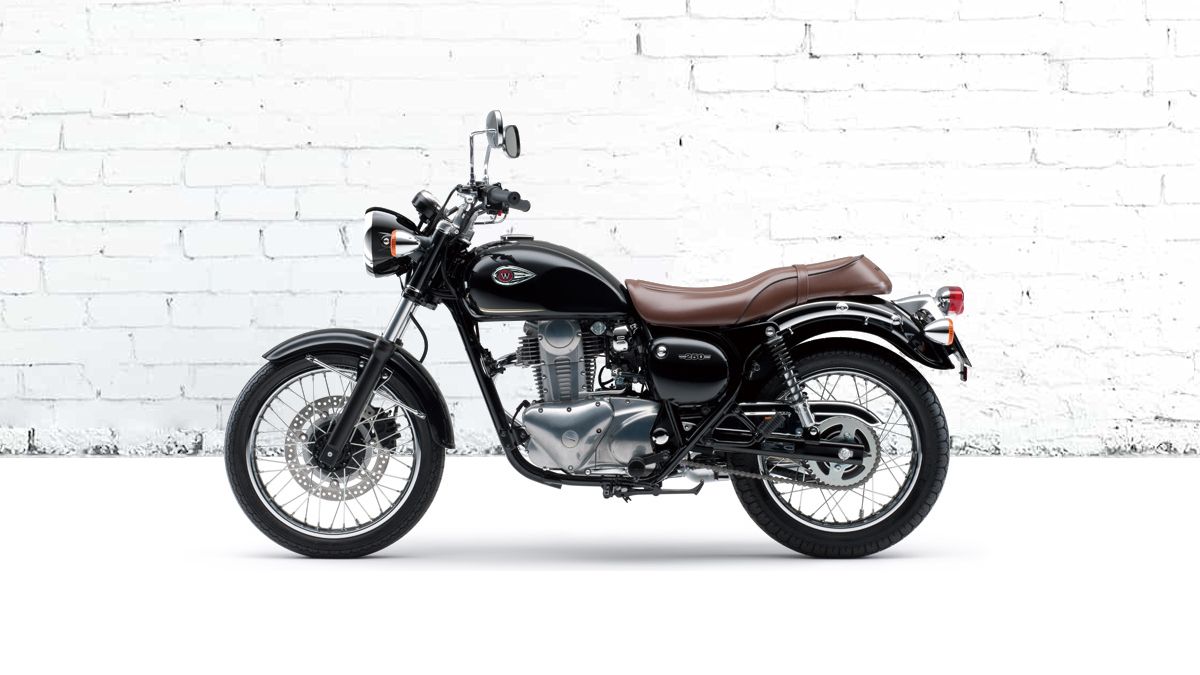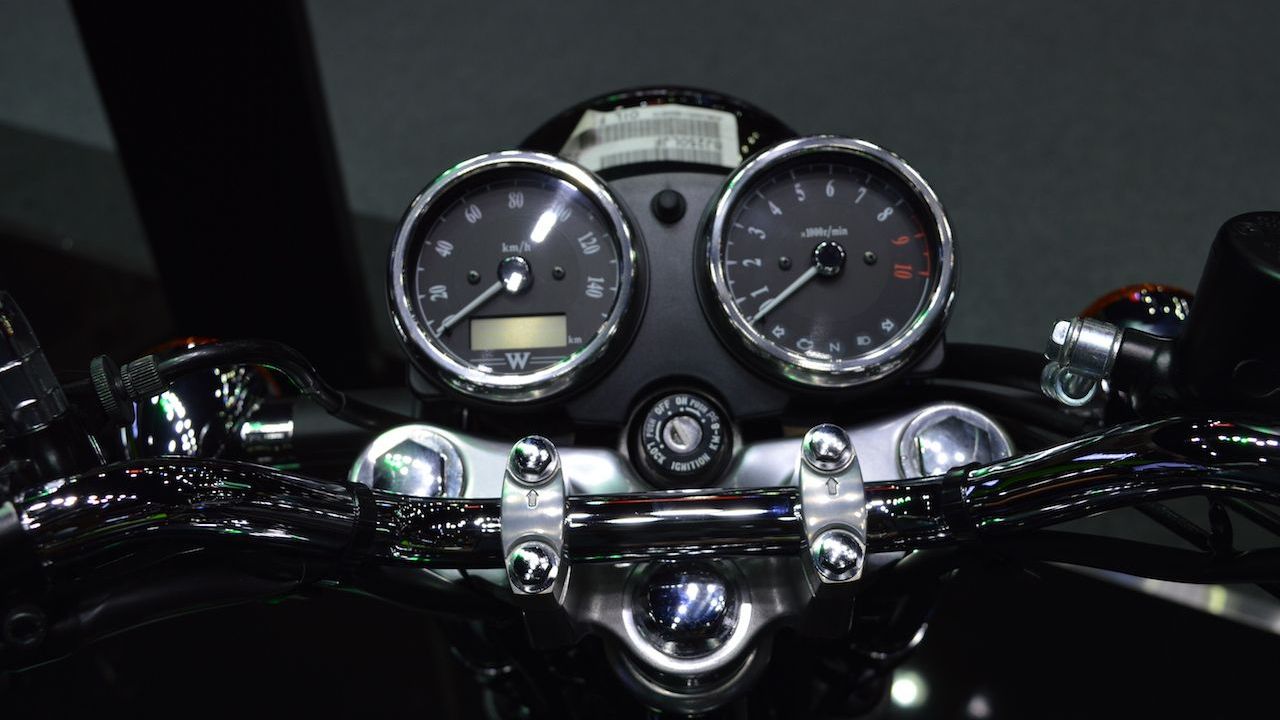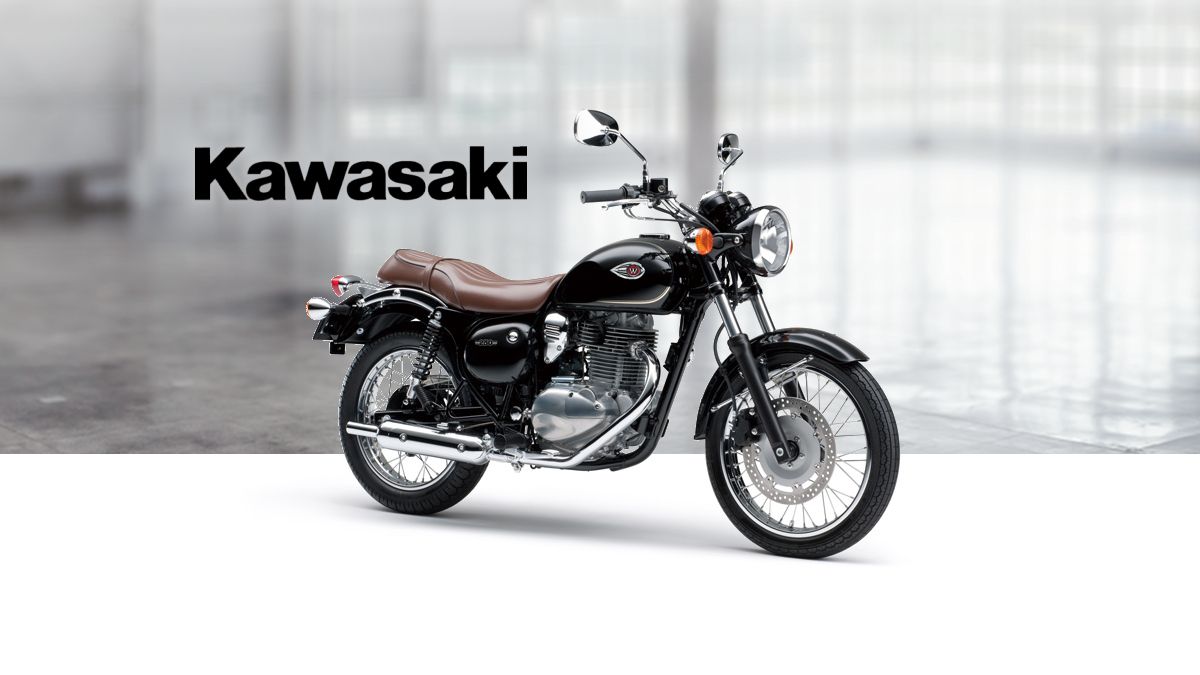Kawasaki's “W” family has been on the world stage since 1966, and the legacy continues with the new W250. This cute little “leisure bike” packs classic charm into a small package with dated references and finishes that invoke plenty of nostalgia. Power comes from a 250 cc plant with over 15 ponies on tap and loads of fun for an entry-level rider, or one seeking to move up from small-displacement scooters. As simple as it is attractive, the W250 certainly brings something special to the market, so today I'm going to take a look at Kawi's little retro-ride to see what makes it tick.
Continue reading for my look at the Kawasaki W250.
2018 Kawasaki W250
- Make: Array
- Model: 2018 Kawasaki W250
- Engine/Motor: single cylinder
2018 Kawasaki W250 Design
The W250 falls right into the same standard category as Honda's old-school Rebel and Suzuki's Boulevard S40 in terms of looks and stature. A set of wire wheels gets things started off in the right direction with proportions that work well with the 55-inch wheelbase and overall stance, and the blackout treatment on the fork sliders, tripletree and headlight can gives the “Dub” a bit of a homejob-custom air that pairs well with the dated design.
An old-school, strut-type fender contains the fling up front below a simple, round cyclops headlight housing and turn-signal standoffs. Dual round instrument housings strike another dated chord, as does the teardrop fuel tank though the flange-style reservoir is one classic detail I could do without. Yeah, it fits the style well enough, but that doesn't mean I have to like it.
The seat comes in a natural/tan color with a (faux) tuck-and-roll design that marries well with the rest of the look with a gentle rise to the pillion pad and a grabstrap to go with the fold-up footpegs to finish out the passenger's gear.
A classic rear-struts-and-fender setup contains the fling from the rear wheel with tagholder and lights mounted up on the fender proper so as to leave only a small reflector hanging below the lip. And there it is folks; clean, simple and vital with nothing of a superfluous nature to be found.
2018 Kawasaki W250 Chassis
Tubular-steel members make up the downtube frame that fully supports and cradles the mill rather than using it as a stressed member to complete the structure, but remains clean-looking through the use of a single-downtube design. A set of 39 mm stems float the front end on fixed damping values with preload-adjustable, coil-over shocks out back that are similarly vanilla as far as the damping goes.
Seat height measures out at a low 28.9-inches off the ground to make for easy footwork for the shortest inseams. A 300 mm disc and hydraulic caliper slow the front wheel, but out back an old-fashioned, 160 mm drum brake takes care of business; no ABS or combined-brake BS, just raw, honest performance and feel, and at only 357 pounds soaking wet, that's plenty of brakeage to handle this ride.
Spoked wheels mount a 90/90-18 up front and 110/90-17 out back, and again, I have to point out how the tire proportions and shape bolster the efforts to hit that historical tone the factory was going for.
|
Suspension, Front: |
φ39 mm telescopic fork |
|
Suspension, Rear: |
Swingarm, dual shock absorbers with spring preload adjustability |
|
Brakes, Front: |
Single φ300 mm disc. Caliper 2-piston |
|
Braks, Rear: |
Drum, φ160 mm |
|
Tire front: |
90/90-18M/C 51P |
|
Tire rear: |
110/90-17M/C 60P |
2018 Kawasaki W250 Drivetrain
Power comes from a four-stroke thumper that runs a 66 mm bore and 73 mm stroke with a 9-to-1 compression ratio. Yeah, one-lunger engines have a (much deserved) reputation for being able to shake the fillings out of your teeth, so Kawi added a balancer to take some of the sting out of it and give your hands-and-butt a break.
A single over-head cam times the two-valve head for a compact arrangement that keeps the size of the top end to a minimum and the internals as simple as the rest of the rig. You can expect to get 17.75 ponies out of it at 7,500 rpm with 13 pounds of torque that come on fully at 5,500 rpm, which is about right for this displacement and unlikely to “get away” from you, regardless of your level of experience.
A five-speed transmixxer crunches the ratios and sends the power to the rear wheel via the chain final drive. It's an uncomplicated mill to be sure, but it provides the essentials.
|
Engine: |
Air-cooled, 4-stroke Single cylinder, SOHC, 2 valves/cylinder |
|
Displacement: |
250 cc |
|
Bore and stroke: |
66.0 x 73.0 mm |
|
Compression ratio: |
9.0:1 |
|
Power: |
17.6 hp @ 7,500 rpm |
|
Torque: |
18 Nm @ 5,500 rpm |
|
Transmission: |
5-speed, return |
|
Ignition system: |
Digital |
|
Fuel system: |
Fuel injection (φ32 x 1) |
|
Starting system: |
Electric |
|
Clutch: |
Wet multi-disc, manual |
2018 Kawasaki W250 Pricing
It doesn't look like the W250 is on any American showroom floors just yet, but it looks like we can expect to pay something in the $5,400 range if it does get here. Right now, I'm seeing it in either black or a nice midnight blue in some of the Asian markets.
2018 Kawasaki W250 Competitors
Obviously, the classic Honda Rebel 250 would be a good toe-to-toe competitor here, but Honda revamped the line this year with machines that bear little resemblance to their predecessors. With that in mind, I think the new gen will still make an okay competitor, so let's get to it.
Honda takes the look of its ubiquitous little cruiser in a decidedly modern direction. Liquid cooling changes the look of the entire drivetrain, so gone is the charm of the air-cooled fins on the jugs even though it's replaced with something that is arguably better. Looks matter, and the W250 has a charm all its own that the new Rebel 300 can't touch.
Honda runs a beefier front end with 41 mm forks, and grabbier brakes with a rear disc opposed to the drum on the Kawi, but doesn't really gain much in the way of usable stopping power without an ABS to make it safe to look for the edge of the envelope. Honda powers the “300” with a 286 cc plant for a slight size advantage over the 250 cc Kawi, but it's the power difference that really hurts Kawi here. Tthe Rebel produces approximately 30 ponies and 20 pounds o' grunt for a difference that you will feel below the belt. Couple that with the $4,399 price tag and it looks like Honda may have Kawi over a barrel on this one.
He Said
“I like it. This snack-size ride reminds me of my old Rebel, just with more charm. Gotta' admit though; the plant is a little small for U.S. commutes, especially in faster areas, but if you pick your route you can probably get there without too much stress. The only question now is; when is it coming to the States?”
She Said
My wife and fellow motorcycle writer, Allyn Hinton, says, “Probably not for a long time, considering Kawasaki hasn't graced us with its W800. I see this called the Estrella in other markets. The W250 was showcased at the 2017 Thai Motor Show, and I think a platform like this would make a dandy scrambler.”
2018 Kawasaki W250 Specifications
|
Engine & Drivetrain: |
|
|
Engine: |
Air-cooled, 4-stroke Single cylinder, SOHC, 2 valves/cylinder |
|
Displacement: |
250 cc |
|
Bore and stroke: |
66.0 x 73.0 mm |
|
Compression ratio: |
9.0:1 |
|
Power: |
17.6 hp @ 7,500 rpm |
|
Torque: |
18 Nm @ 5,500 rpm |
|
Transmission: |
5-speed, return |
|
Ignition system: |
Digital |
|
Fuel system: |
Fuel injection (φ32 x 1) |
|
Starting system: |
Electric |
|
Clutch: |
Wet multi-disc, manual |
|
Chassis: |
|
|
Suspension, Front: |
φ39 mm telescopic fork |
|
Suspension, Rear: |
Swingarm, dual shock absorbers with spring preload adjustability |
|
Brakes, Front: |
Single φ300 mm disc. Caliper 2-piston |
|
Braks, Rear: |
Drum, φ160 mm |
|
Tire front: |
90/90-18M/C 51P |
|
Tire rear: |
110/90-17M/C 60P |
|
Dimensions & Capacities: |
|
|
Length x Width x Height: |
81.7 in x 29.7 in x 41.5 in (2,075 mm x 755 mm x 1,055 mm) |
|
Wheelbase: |
55.5 in (1,410 mm) |
|
Road clearance: |
6.7 in (170 mm) |
|
Seat height: |
2839 in (735 mm) |
|
Curb mass: |
357.1 lbs (162 kg) |
|
Fuel Tank Capacity: |
3.4 gals (13 liters) |
References
Honda Rebel
See our review of the Honda Rebel.
Suzuki Boulevard S40
See our review of the Suzuki Boulevard S40.

